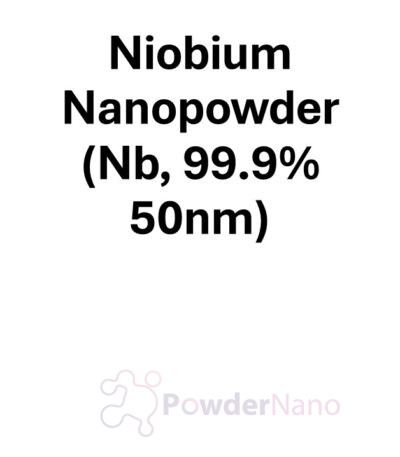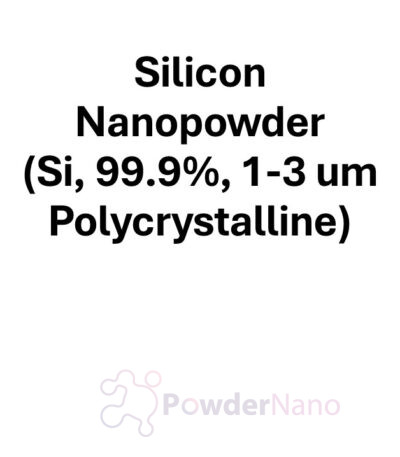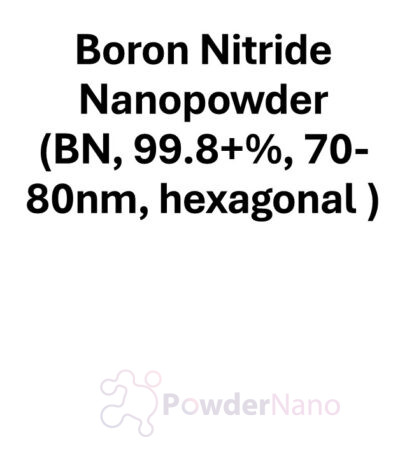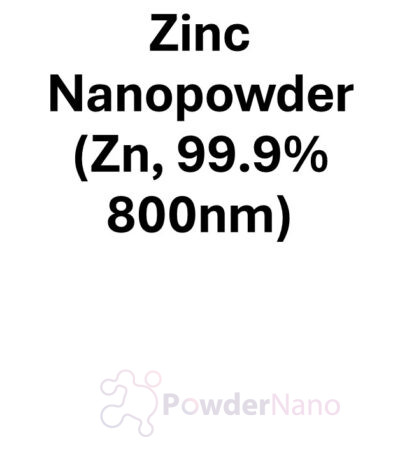Titanium Dioxide (TiO2)
“Titanium dioxide (TiO2) is used in a variety of personal care products, including sunscreens, pressed powders, and loose powders, as a UV filter or whitening agent.”
Titanium dioxide plays a vital role in the cosmetic industry, serving as a versatile component. This inorganic substance finds widespread application as both a white pigment and an inorganic UV filter in various cosmetic products.
Titanium dioxide is a versatile ingredient that can be found in a wide range of cosmetic products, including sunscreens, foundations, powders, and more. Its primary function as a UV filter ensures effective protection against the harmful effects of sunlight. Furthermore, it adds a whitening, opaque, and pigmented quality to these products, enhancing their overall appearance. The cosmetic industry capitalizes on the unique properties of titanium dioxide to improve product durability and create innovative formulations. With our Titanium Dioxide PowderNano products, you can enhance your research and business endeavors by accessing materials that offer exceptional resistance to corrosion and impressive thermal stability.
Titanium dioxide, also referred to as titanium (IV) oxide or titania, is an inorganic substance with the chemical formula TiO2. It is widely known as Pigment White 6 (PW6), titanium white, or CI 77891 when utilized as a pigment. Despite its occurrence in black mineral formations, it exists as a white solid that does not dissolve in water. It finds extensive application as a pigment in diverse products like paints, sunscreens, and food coloring. In the realm of food, it is identified by the E number E171. The global production of titanium dioxide surpassed 9 million tons in 2014. This compound is a fundamental ingredient in numerous pigments, contributing to its substantial market value of $13.2 billion for oxide-based pigments.
With six oxide anions bonded to it, titanium exhibits octahedral geometry in all three of its primary dioxides. Three Ti centers are then connected to these oxides. Rutile, anatase, and brookite all possess orthorhombic crystal structures, while rutile and anatase also exhibit tetragonal symmetry. In rutile, the oxide anions are arranged in a deformed hexagonal close packing, whereas in anatase and brookite, they adopt positions close to cubic close packing and “double hexagonal close packing,” respectively. The oxygen substructures in all cases represent slight distortions of close packing. For various other metal dioxides and difluorides, including RuO2 and ZnF2, the rutile structure is prevalent. Each Ti atom in molten titanium dioxide coordinates with an average of five oxygen atoms in its local structure. Ilmenite is a mineral primarily used to produce synthetic TiO2. As naturally occurring TiO2, rutile and anatase are widely distributed. For instance, rutile is a common “heavy mineral” found in beach sand. Another ore is leucoxene, a fine-grained anatase formed during the spontaneous alteration of ilmenite. The oriented rutile needle inclusions contribute to the asterism seen in star sapphires and rubies.
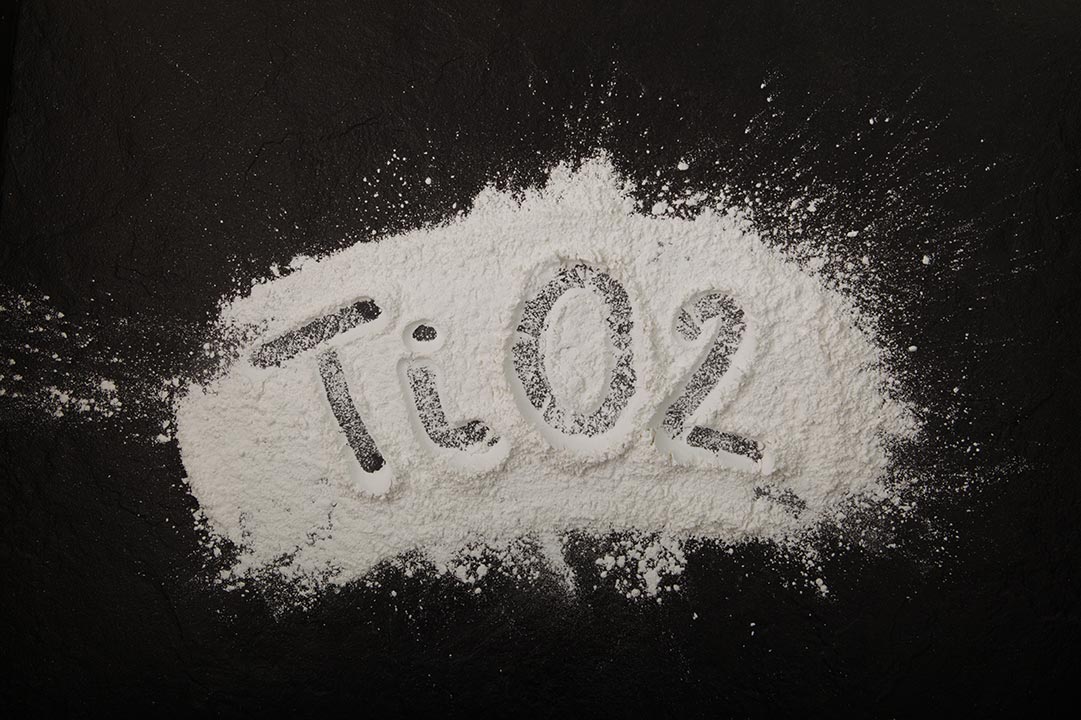
To safeguard against the well-known carcinogenic effects of UV radiation, titanium dioxide (TiO2) can be used in cosmetics, both as a microcrystalline white pigment and as an inorganic ultraviolet (UV) filter. It is worth noting that the cosmetics industry often utilizes surface-modified titanium dioxide to enhance physical and chemical stability, minimize powder dusting, improve pigment dispersions, and develop innovative products not achievable with conventional pigments. Various treatments are available, including salts, esters, fluoropolymers, and different types of silicones, with silicone derivatives such as hydrogen and ethoxy types being the most commonly employed. It is important to highlight that titanium dioxide finds applications in a wide range of products beyond cosmetics. It is a common ingredient in food, toothpaste, orthodontic materials, and paints. In food, it serves as a food additive for anti-caking and whitening purposes, as well as to enhance the color and gloss. Additionally, titanium dioxide is utilized for its photocatalytic and biocidal properties. Due to its minimal absorption of light in the visible range of the spectrum (380–700 nm), titanium dioxide is primarily used as a white pigment. By strongly dispersing incident light, titanium dioxide scatters it through surface reflection, refraction, and diffraction within the crystal structure.
Titanium Dioxide: A Brief Historical Overview
Since its initial use several decades ago, titanium dioxide (also known as CI 77891) has become one of the most widely utilized chemicals in the cosmetics industry. Its natural occurrence, ability to refract light, and white hue make it a popular choice for pigmentation and brightening purposes. Titanium dioxide, often referred to as TiO2, can be found in various cosmetic products, including sunscreen, treatments for sensitive skin, decorative cosmetics, soap, and toothpaste. For a comprehensive understanding of the role of this element, let’s delve into the details provided in this blog.
The U.S. Food and Drug Administration (FDA) has approved the use of TiO2, a white powder, as a colorant in cosmetics and personal care products applied to the skin, lips, nails, and other body parts. It serves to enhance opacity and reduce transparency in product formulations. Furthermore, TiO2 possesses the ability to absorb, reflect, or scatter light, including harmful UV rays from the sun, thereby offering protection against light-induced damage in sunscreen products. Consequently, TiO2 is commonly included in sunscreen formulations to safeguard the skin from the adverse effects of UV radiation. Exposing unprotected skin to UV radiation increases the risk of skin cancer (primarily from UVA rays), sunburn (mainly caused by UVB rays), and premature aging. It is worth noting that TiO2 has also been accepted as an active ingredient in sunscreen by regulatory bodies in Australia, Canada, the European Union, and Japan.
Titanium dioxide (TiO2) is a versatile substance with numerous applications, frequently employed as a cosmetic or food additive. However, concerns regarding its safety have arisen, particularly when used in nanoscale products. This article examines and summarizes recent research on the safety of titanium dioxide nanoparticles (TiO2 NPs) used as food additives or sunscreen ingredients. While some studies suggest that cutaneous or oral exposure to TiO2 NPs poses no harm to humans, a substantial body of evidence indicates that these particles can be hazardous to animals. Currently, there is no consensus among researchers regarding the overall safety of this nanomaterial. Furthermore, international authorities have yet to establish defined standards for comprehensive characterization of TiO2 NPs in food and cosmetic products. The article also highlights recent advancements in the use of “green-synthesized” TiO2 NPs and provides a comparison between the characteristics of “biogenic” and “traditional” nanoparticles.
Derived from ilmenite ore, a naturally occurring white mineral, titanium dioxide is a common ingredient in mineral-based cosmetics and sunscreens. Scientists consider titanium dioxide to be chemically inert, meaning it does not react with other substances. Unlike chemical sunscreens that absorb UV radiation, titanium dioxide acts as a physical barrier when used as a sunscreen component. Scientifically speaking, sunscreen protects the skin by forming a temporary bond with the outer layer, preventing the absorption of UV rays. To incorporate titanium dioxide into cosmetic formulations, it is coated and fragmented into tiny particles. This method enhances the thickening and lubricating properties of cosmetics.
Overall, titanium dioxide (TiO2) is a versatile and widely used chemical in the cosmetics industry. Its natural occurrence, light-refracting properties, and white color make it an ideal choice for various cosmetic applications. The FDA has approved its use as a colorant in cosmetics, while its ability to absorb and reflect light, including harmful UV rays, makes it valuable for sunscreen formulations. However, the safety of titanium dioxide nanoparticles is still a topic of debate, with conflicting research findings and a lack of standardized characterization methods. Nevertheless, titanium dioxide remains a popular ingredient in mineral-based cosmetics and sunscreens due to its inert nature and physical sun-blocking properties.
Niobium Nanopowder (Nb, 99.9%, 50nm)
Silicon Nanopowder (Si, 99.9%, 1-3 um, Polycrystalline)
Boron Nitride Nanopowder (BN, 99.8+%, 70-80nm, hexagonal )
Zinc Nanopowder (Zn, 99.9%, 800nm)
The Transformative Power of Titanium Dioxide (TiO2) in Cosmetics
Benefits of Titanium Dioxide
Cosmetic Pigment:
Titanium dioxide, in its pigmented form, is an extensively utilized cosmetic pigment. It provides a vibrant and lustrous sheen, enhancing the color of various cosmetic products such as foundations, blushes, eyeshadows, and lipsticks. Its exceptional properties allow for the creation of a diverse range of shades and hues, adding to its versatility.
Texture and Opacity:
In its non-pigmented form, titanium dioxide (CI 77891) is an essential component in cosmetics, as it enhances texture, provides a smooth and sheer appearance, and increases the opacity of various products. This versatile ingredient is crucial for the development of effective sunscreens and aids in the formulation of products that successfully conceal imperfections, resulting in seamless and consistent coverage.
Water Resistance and Oil Absorption:
Titanium dioxide is frequently included in cosmetics for its water-resistant properties, making it ideal for long-lasting and water-resistant makeup products. Its ability to withstand moisture helps makeup stay in place during activities like swimming or exercising. Moreover, titanium dioxide is known for its capacity to absorb excessive skin oils, making it a sought-after ingredient in oil-control and mattifying cosmetics.
UV Protection:
Titanium dioxide is utilized as a physical barrier in sunscreens to protect the skin from harmful UVA and UVB rays. It acts as a reflective shield, scattering and reflecting the UV radiation away from the skin. This helps to prevent sunburn, skin damage, premature aging, and the risk of skin cancer.
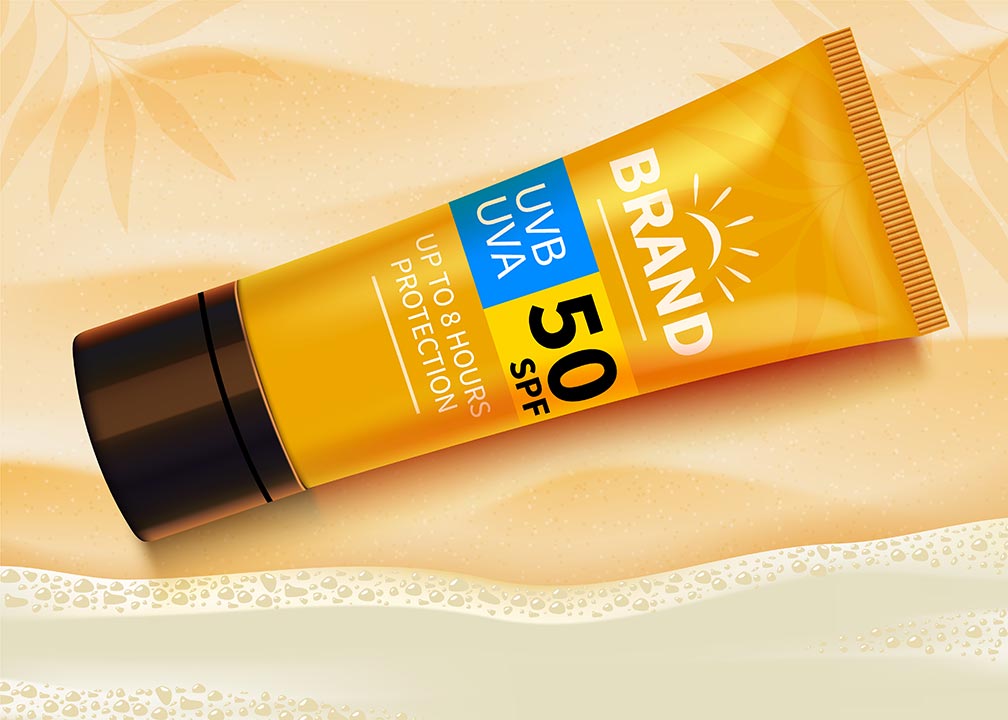
Non-irritating : Sunscreens and cosmetics that contain titanium dioxide are frequently formulated to be gentle on sensitive skin. Titanium dioxide is a mineral ingredient known for its low likelihood of causing irritation, unlike certain synthetic materials present in some sunscreens. It can provide a soothing effect and serves as a suitable natural alternative for individuals with sensitive or inflamed skin.
Reducing the risk of premature aging: Consistently applying sunscreen containing titanium dioxide, along with a minimum SPF of 30, can aid in shielding the skin against the detrimental effects of UV radiation. This encompasses DNA damage, hastened aging, and a heightened susceptibility to skin cancer. By safeguarding the skin, titanium dioxide can help maintain a more youthful and vibrant appearance, minimizing the visibility of fine lines, wrinkles, age spots, and diminished elasticity.
Non-comedogenic: For individuals with acne-prone or easily congested skin, products containing titanium dioxide can be beneficial. Titanium dioxide is non-comedogenic, which means it does not clog pores or contribute to the development of acne. It is water-loving and easily rinses off the skin, making it suitable for those concerned about blocked pores, breakouts, and skin irritation.
Invisibility: If you’re looking for a sunscreen that doesn’t leave a white cast on the skin, opting for one containing titanium dioxide can be a great choice. While some sunscreens may still require thorough blending, titanium dioxide tends to offer a more transparent finish compared to other UV filters. However, it’s important to keep in mind that the level of transparency can vary depending on the specific formulation of the sunscreen. Therefore, it’s recommended to try out different products to discover the one that best meets your preferences.
Side effects of Titanium Dioxide
In general, topical use of titanium dioxide is considered safe and does not typically cause negative side effects. It is a commonly used ingredient in cosmetics and sunscreens, as it provides protection against harmful UV rays. Titanium dioxide is generally not absorbed into the skin and does not tend to trigger allergic reactions. However, it is important to consider a few factors when using products containing titanium dioxide. Inhalation of titanium dioxide-containing powders should be avoided, so it is recommended to steer clear of loose powders, blushes, eyeshadows, and sprays that contain titanium dioxide. Instead, opt for cream- or lotion-based formulations, which are generally considered safer. Additionally, choosing products with a micronized formulation can help achieve a smooth texture on the skin and prevent any white casts, thus enhancing the overall user experience and making such products more widely accepted.
Uses of Titanium Dioxide in Cosmetics
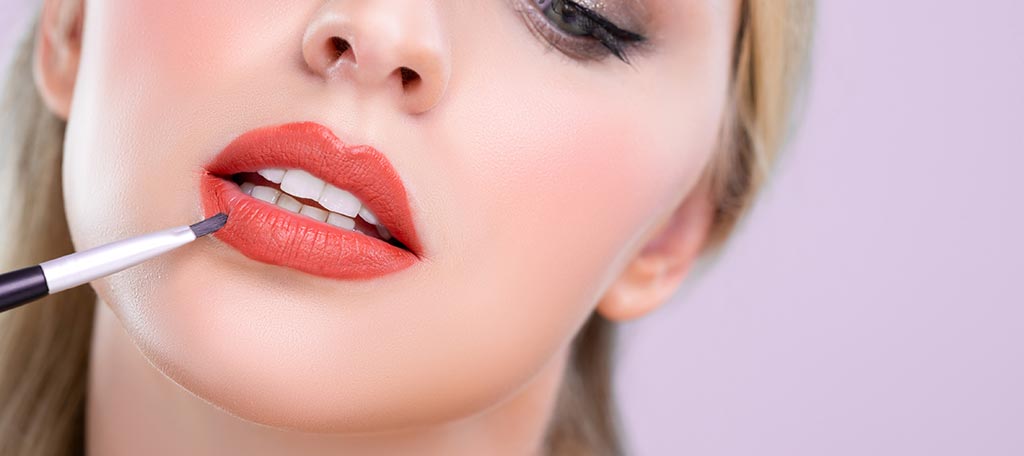
Foundation and Concealers:
Titanium dioxide is a widely used pigment in foundations and concealers, primarily employed to provide color and enhance coverage. It is particularly popular in products designed for oily or combination skin types due to its ability to promote a smooth, uniform texture and assist in absorbing excess oil. Moreover, titanium dioxide possesses inherent sun protection properties, making it beneficial for safeguarding the skin against harmful UV damage.
Powder-based Products:
To achieve a matte look and enhance texture, titanium dioxide is commonly utilized in powder-based cosmetics such as blushes and setting powders. It can help absorb excess oil and create a consistent, even surface on the skin. Moreover, titanium dioxide can aid in light dispersion, reducing the appearance of wrinkles and fine lines.
Eye Makeup:
Titanium dioxide is a commonly used pigment in eye cosmetics such as eyeshadow, eyeliner, and mascara, providing vibrant color and opacity. Its presence helps create a consistent, smooth texture and prevents the color from smudging or fading. Additionally, titanium dioxide is often combined with other ingredients to create durable, waterproof formulas specifically designed for the sensitive eye area.
Nail Polish:
Nail polish contains titanium dioxide as a whitener and opacifier. It can aid in producing a consistent, opaque hue and prevent it from turning too translucent or streaky. Additionally, titanium dioxide can aid in producing a uniform, smooth texture and can aid in preventing chipping or peeling of the polish.
Hair Care Products:
In order to provide hold and structure to hair care products like styling gels and mousses, certain additives are occasionally utilized, including titanium dioxide. Titanium dioxide can help keep hair from becoming too frizzy or unruly, allowing for the creation of solid, long-lasting styles. However, it is important to note that the use of titanium dioxide in hair care products is relatively less common compared to its presence in other categories of cosmetics.
While titanium dioxide can be beneficial in hair styling products, it is important to consider the potential for buildup over time on both the hair and scalp. Excessive buildup may have negative effects on the appearance and health of the hair, such as weighing it down or causing dullness. Therefore, manufacturers tend to use titanium dioxide more sparingly in hair care products to minimize the risk of such buildup.
Hair care product formulations are carefully balanced to ensure that the benefits of titanium dioxide, such as its ability to provide hold and structure, are maximized while minimizing the potential for long-term buildup. This allows individuals to achieve the desired style without compromising the health and overall condition of their hair.
It is worth noting that there are various other ingredients and technologies used in hair care products to provide hold, structure, and styling benefits. Different formulations cater to specific hair types and styling preferences, offering a wide range of options for consumers seeking to achieve their desired hairstyles while maintaining healthy hair.
Lipstick and Lip Gloss:
Titanium dioxide is commonly used as a pigment to enhance the color, gloss, and opacity of lip gloss and lipstick. Its presence contributes to a more even and smoother texture, while reducing the likelihood of color bleeding or feathering. Moreover, given that the lips are particularly susceptible to sunburn and skin damage, titanium dioxide provides added protection by shielding them from harmful UV rays.
